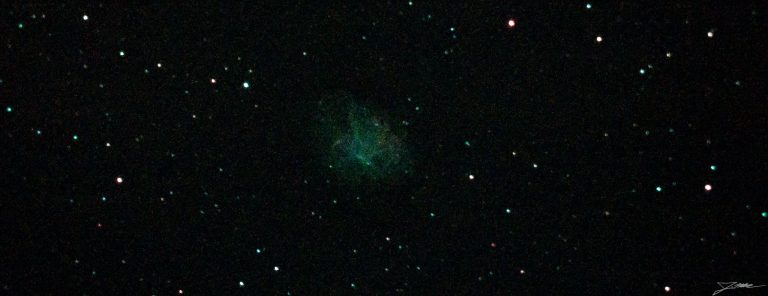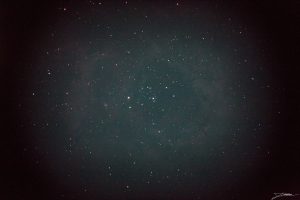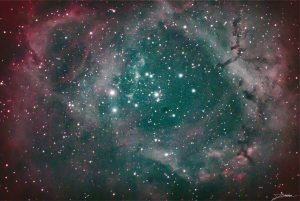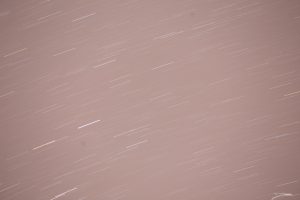
I really need to get better at blogging on the regular. The simple act of sitting down and getting stuff out of my head and onto ‘paper’ as it were does wonders for setting those ideas free, allowing me to move on to other things. It is also not a bad way to work on honing my wordcraft. If I practice writing succinctly on a more regular basis, when I actually need to write, I will be more practiced at getting a distilled version of my thoughts out into the world, hopefully meaning quicker initial drafting with fewer revisions. Hopefully. BLUF: I need to write more often, so I can say more by writing less. Capice?
In any case, I’ve managed to grab a couple shots of the stars recently, and thought I would post them here in addition to the friends-only albums on Facebook. Publishing astrophotos to facebook and twitter is easier than writing here, in that I can dump a bunch of photos in an album, and if I forget to write captions, they’ll still be associated with whatever the album is (kids, pets, motorcycles, etc.) without further effort on my part. While that’s okay for feeding all the grandparents images of the kids, it doesn’t really let me talk about the astrophotos, what I was trying to do to get them, etc, ad nauseum. I have witnessed a general decline in the long-form interaction inherent in blogging or writing longer forum posts about topics, and it has reached a point that I would feel remiss in not addressing that trend, at least for myself.
Thus, the topic of this post: I found myself with some randomly clear nights over the last few weeks, and though it prudent to haul out the binoculars and telescope to see what I could see. Entering the spring season, we’re moving past when the Orion constellation is up during the middle of the night, and are rapidly approaching the time when it will be gone again until late fall. While it’s probably the easiest DSO to get images of from here in the light-polluted DC metro area, there are other things around. I can mitigate the light pollution somewhat by using the EF-S specific light pollution filter in a 2″ eyepiece filter adapter, but I only get about 40 arc-seconds of usable field, even with the focal reducer installed. This is because the filter is designed to sit inside a crop-frame EOS camera, and so putting it out at the end of a 2″ eyepiece adapter causes significant vignetting, since I’m now using a full-frame camera. Optolong makes some promising-looking filters, and they’re ~1/3 the price of the Astronomik filter I have, so based on reviews I’ve seen, I’ll likely head down that path very shortly.
So what have I seen? First, before our Disney World trip earlier this month, I was out shooting M42 (again), and managed to catch a couple shots of M1 (the Crab Nebula) before it disappeared behind the trees NW of the house. Since I had the UHC filter installed, I got significantly better contrast than my last attempt at this target, and was able to pull out the featured image at the top after processing. M1 is small relative to the FOV of the telescope, so vignetting didn’t affect it very much. The Rosette Nebula (NGC 2237) on the other hand, is MUCH larger, and thus my images of this target suffer greatly from this image-train issue. How much? Well the M1 is approximately 6×4 arc-minutes in size, while the Rosette is a circular shape, nearly 80 arc-minutes across. Even with the focal reducer installed, the FOV of the NexStar 8 and Canon 6D combo is only 65 arc-minutes across on the short side, so I’d have to shoot multiple images to capture the entire nebula. That or switch to a shorter focal length setup. Since my 400mm Vivitar is not nearly as good optically as the scope, I elected to just get after what I could with the imaging train as-is.
Vignetting is the fall-off in brightness toward the edges or corners of an image, caused by some issue in the optical system through which the camera is ‘looking’. In my system, it’s because I’ve got a rectangular ‘fence’ about 3″ in front of the sensor which is smaller than the sensor itself, which leads to a shadow around the edges of the image. I have minimized this to the best of my ability by aligning the framing of the filter so it’s as aligned with the full-frame sensor as I can, but there’s not much more I can do, because physics. So what sort of problem does this leave me with? See the following image: a raw file from this session, taken into lightroom and boosted 2ev (2 exposure stops) to highlight how the fall-off affects the images. The whole image has been brightened 2 stops, but the corners are still black… there’s no light data reaching them.

I took a bunch of these, stacked them in Photoshop and Deep Sky Stacker, and wasn’t happy with the result from either process. They were both close, but missing elements of the other image. Using the DSS stack as luminosity and the PS one as RGB data, I was able to bring the extra colors of the PS stack out without losing the sharper stars around the edges of the field in the DSS one. Of course I had to crop into the center of the frame to remove the black borders, so what I end up with is a view of NGC 2244, the open cluster at the center of the Rosette Nebula, surrounded by the inner ring of the nebula itself:

For approximately a half-hour’s worth of data, through an imaging train with known (read: significant) vignetting issues, from the light-polluted DC metro area… I think this turned out pretty well. How bad is light pollution? There’s an interesting test for this particular problem described by one Samir Kharusi, over on his website. The short-short version is that you take a camera and lens, and at a known set of apertures and ISO settings, you image the zenith (straight up) until you get the exposure histogram to the middle of the graph. For my front yard, this looks something like the following:

From the time this image took to expose, one can calculate the amount of skyfog (read: noise pollution) and then use that to compare various imaging sites. While this isn’t great, it’s still better than being closer in to DC proper. I need to go up toward town on a clear night and run the same test to see just HOW bad it is, but compared to Tucson, this is pretty abysmal. Based on the amount of skyfog here vs Tucson, the image that I got in ~30 minutes of integration back over the Christmas break last year (note to self: blog about that image…) would take somewhere in excess of 2-1/2 hours worth of images here near DC, assuming Orion was VERY high in the sky. With the typical path of Orion here, that shot would likely take more than 5 or 6 hours to capture. Since my brother lives next to Central Park in NYC, I asked him to do the same test, assuming he gets a chance on a clear night. It might take him a while, since he’s got kids approximately the same age as ours. Funny how the reason for lots of stuff in my life right now can simply be summarized by ‘Because, toddler.’ And with that, I need to stop writing and clean up before the minions awake and start the destructo-process all over again.

Leave a Reply